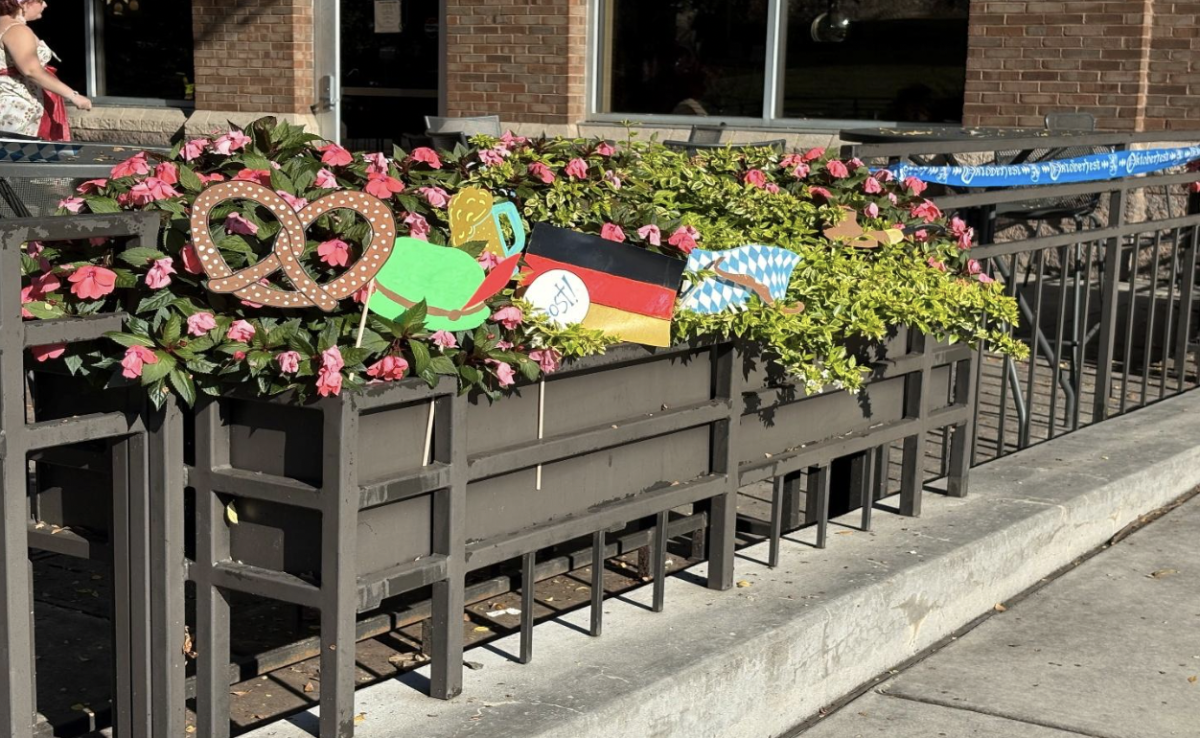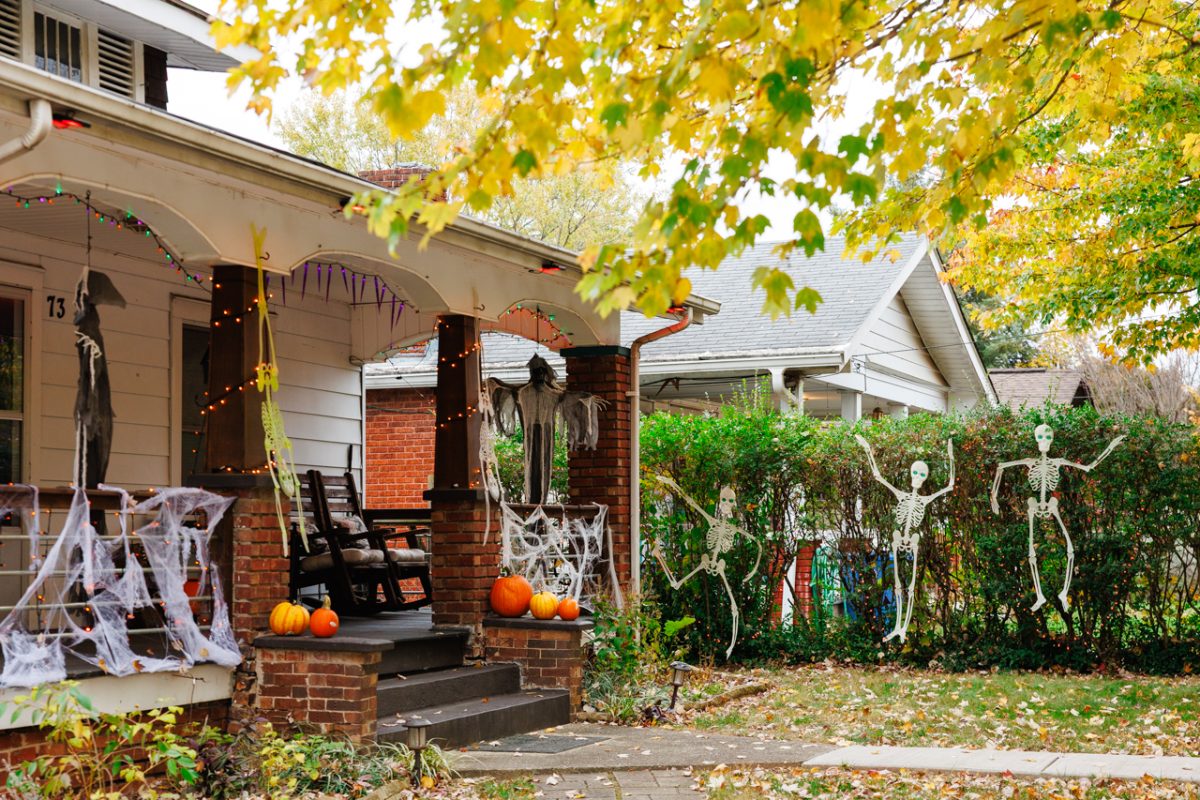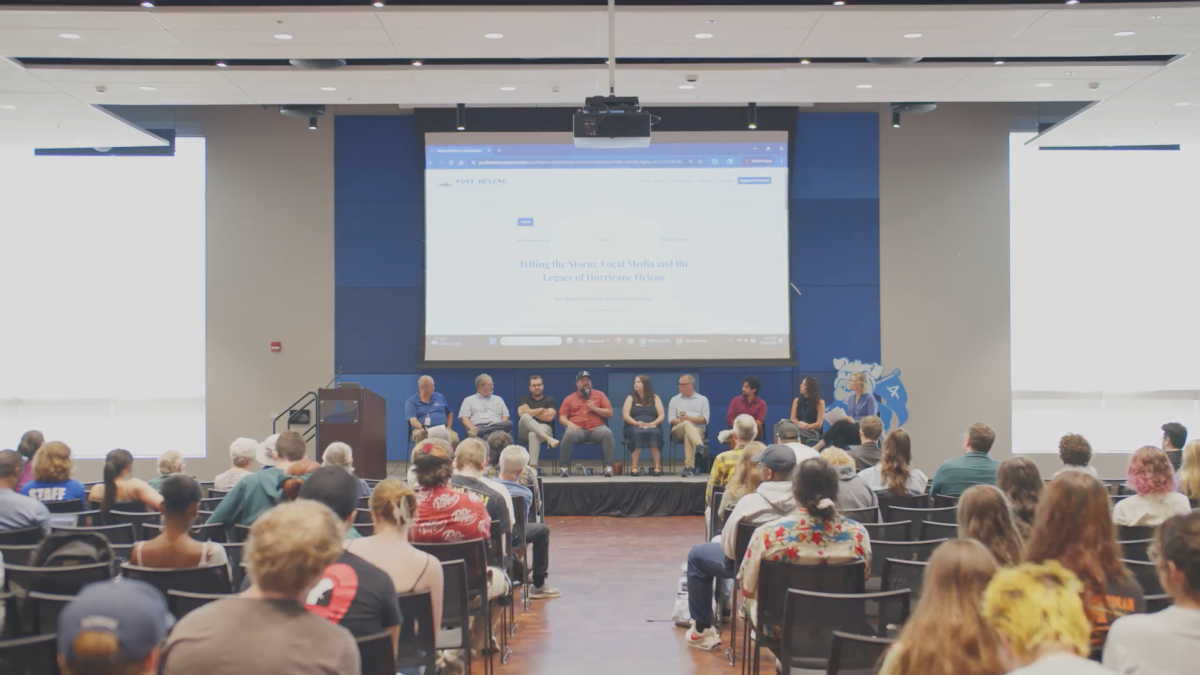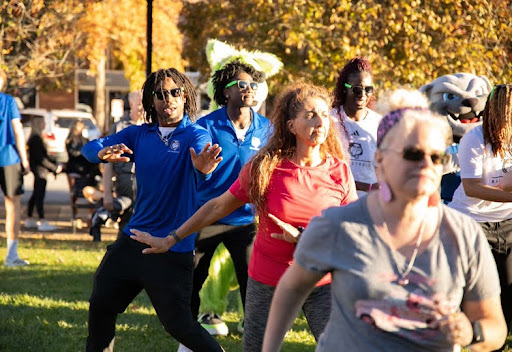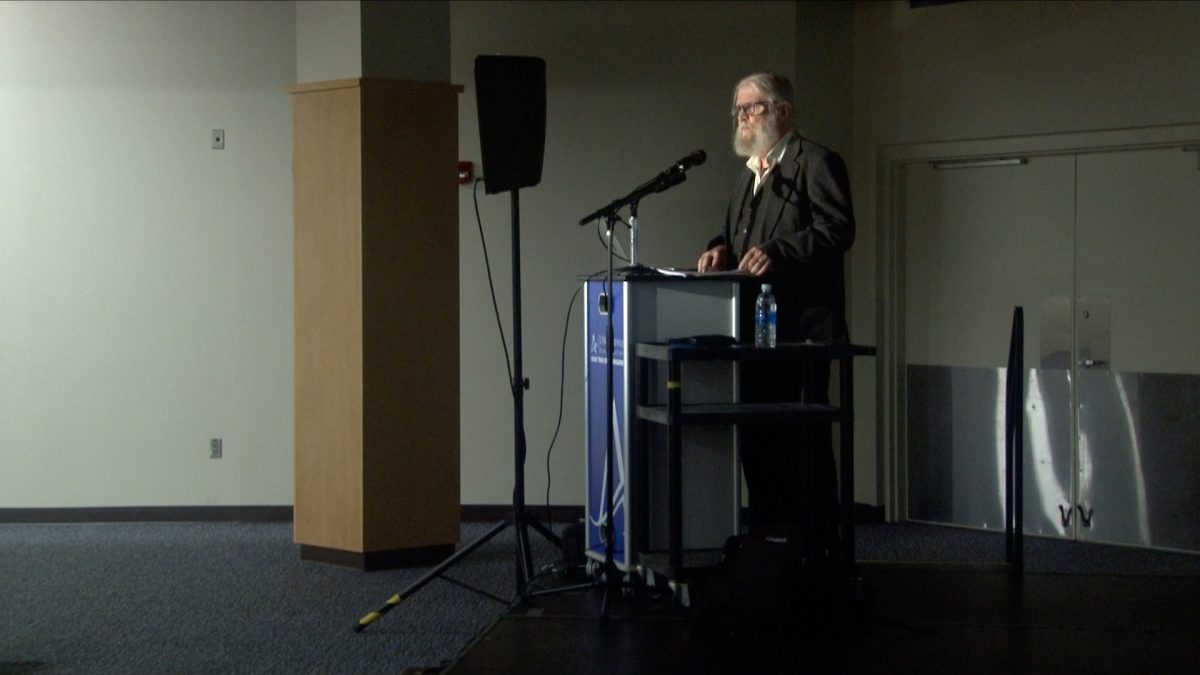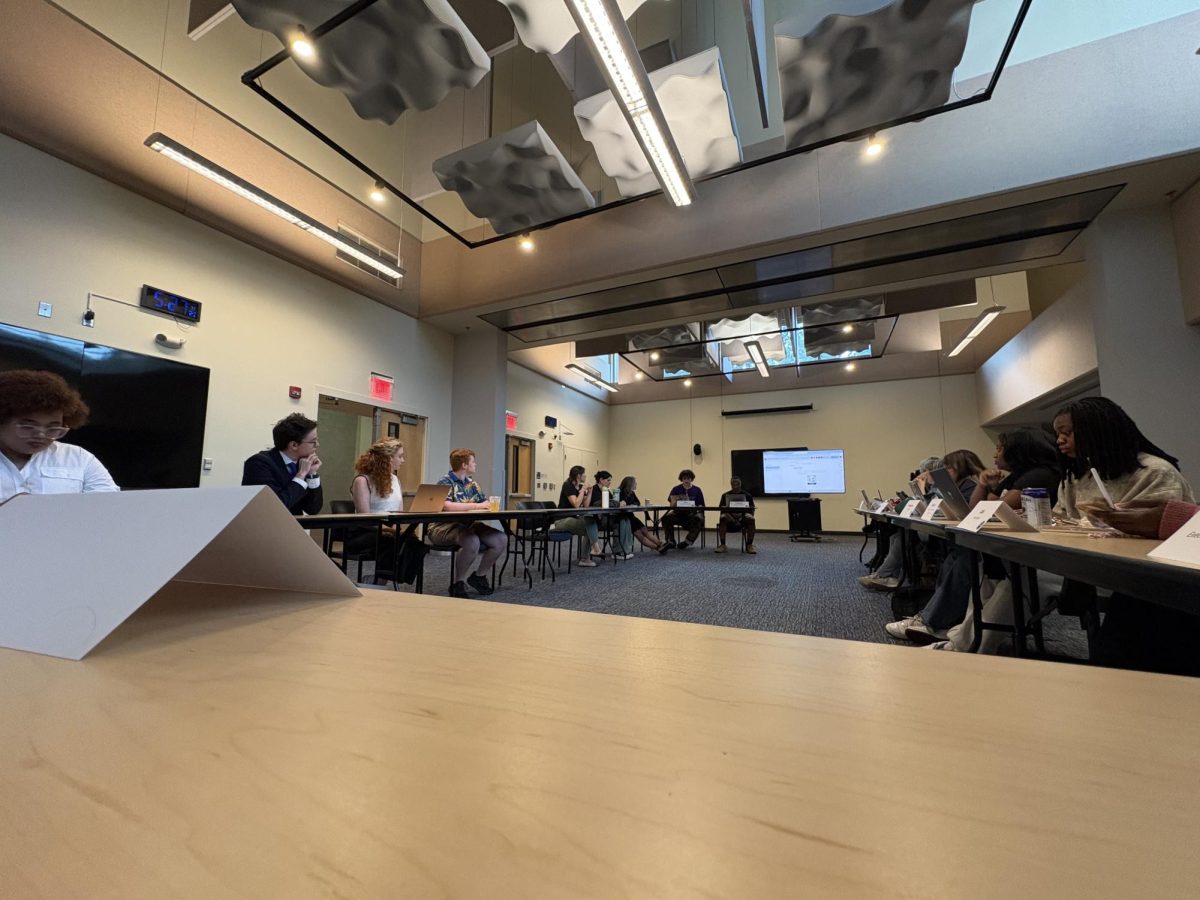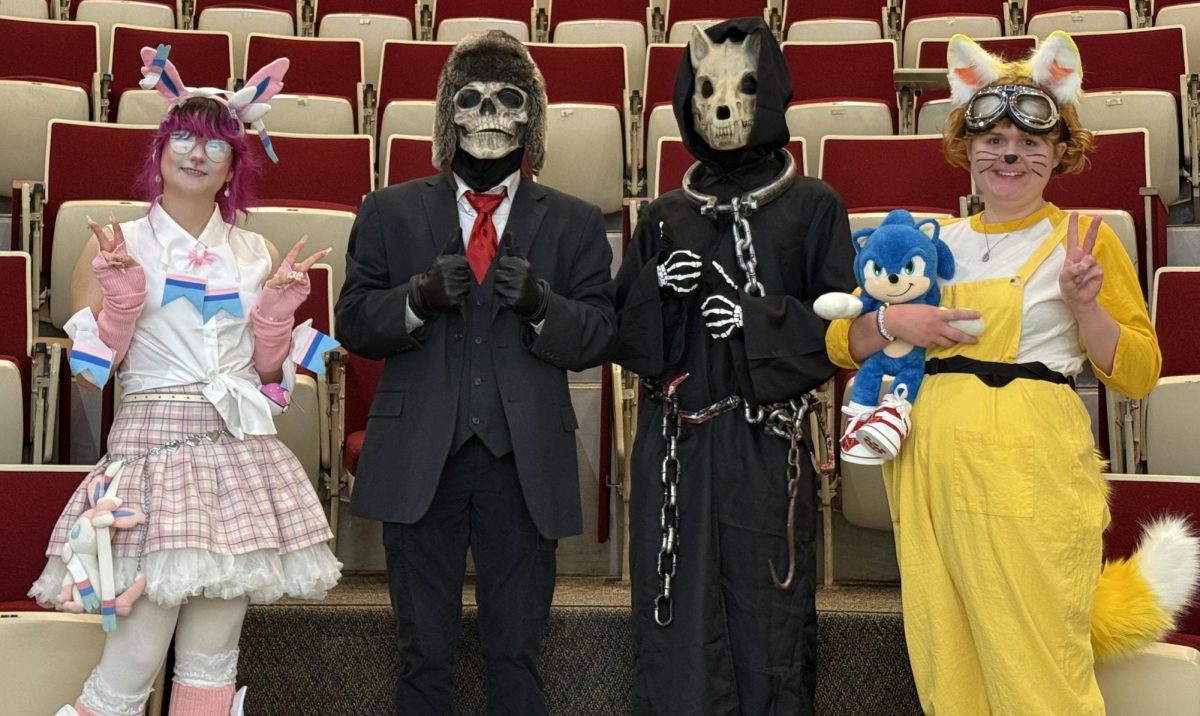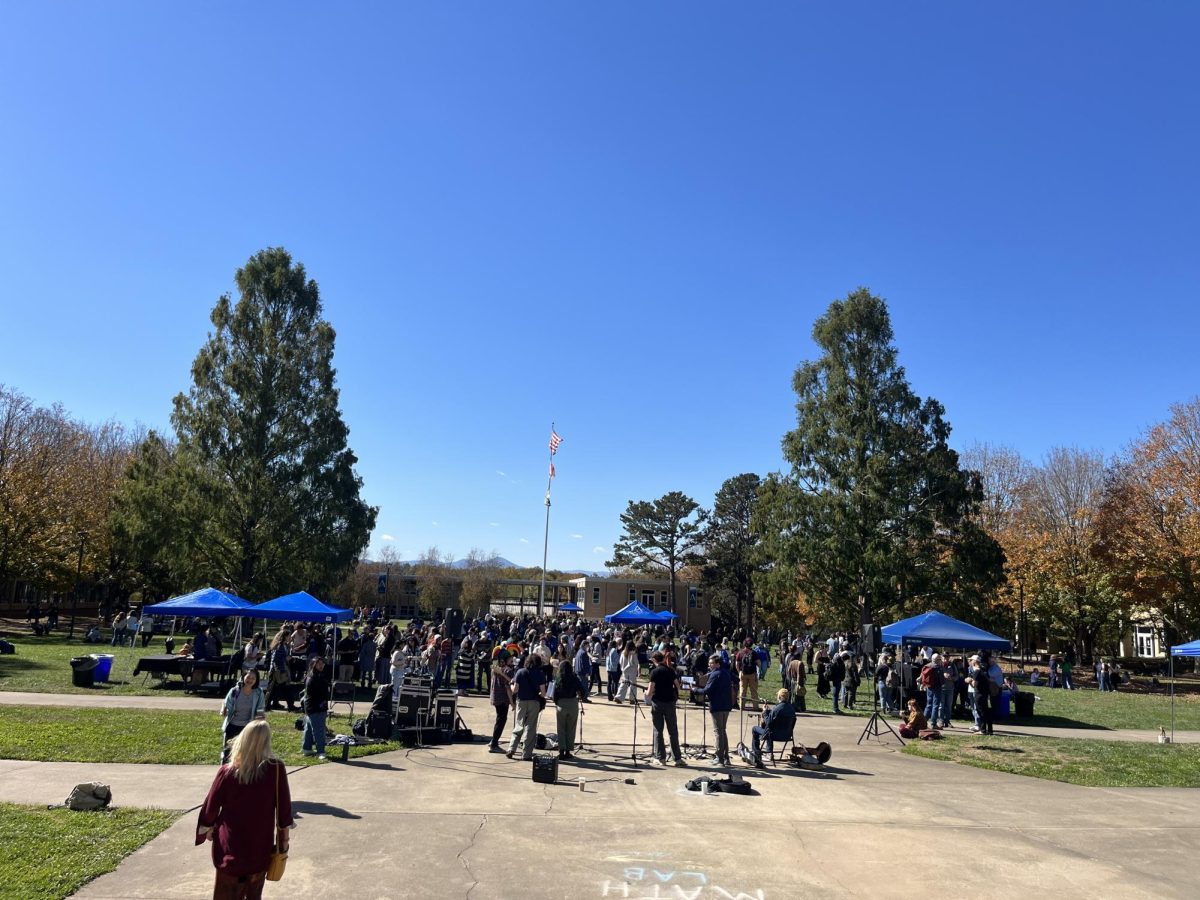Sam Hager
Student Journalist
[email protected]
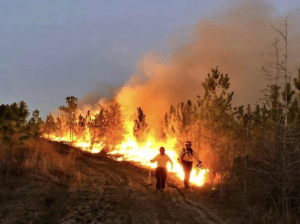
Chase (right) and his burn partner, Duncan (left), ignite a prescribed fire at Sweetwater Farms LLC.
As flames lick the dry, Georgia grass, two men in green cargo pants and yellow shirts walk along a dirt road. Their shadows cast forward, leading them on while a pillar of flames pitches and roars in their wake.
These are the students of Haywood Community College on another burn trip out into Girard, Georgia. Burn trips are regularly scheduled for these students and allow them to learn skills they normally couldn’t in a classroom. However, the pandemic has compromised the ability for these students to adequately learn skills necessary for wildlife management.
Wally Woods, part of the fish and wildlife management department on campus, has conducted several of these trips over the recent years. However, due to the nature of the job, botched trips regularly occur.
“I scheduled six burn trips this year and four of them were rained out,” Woods said.
The current pandemic further frustrates Woods in his ability to schedule more trips.
“Losing basically the whole second half of this spring, we lost three different field trips I had planned,” he said.
Properly managing a prescribed burn requires expertise, according to Chase Cole, a forest management technology major at Haywood. He said accidents can happen.
“In all of my fire experience I’ve never seen an accident, but I’m positive they do happen,” Cole said. “I heard about this one time where one of the guys fell and dropped a radio and that burned up. They also burned a leaf blower up, so you know, accidents do happen.”
On the most recent burn trip Cole attended, conditions were less than pristine.
“We figured it was just grass and there were enough of us so we went ahead with ignition,” Cole said.
According to him, many factors play into the predictability of a fire. Even something so small as a change in direction from the wind could spell disaster for less experienced burners.
“As soon as I lit the starting fire, the wind changed direction,” Cole said.
Immediately after the wind changed, Cole said he began to worry.
“I was thinking ‘this was a bad idea.’ It got really unpredictable for a minute. Wally was constantly checking fire weather and wind direction,” Cole said.
The issues arise when “spot fires,” tiny patches of burning grass and undergrowth, begin to expand as the wind pushes them onward, according to Cole.
“You’re looking and you’re looking and then you blink. All of a sudden, now you have three,” Cole said.
Knowing the danger, Cole said his ears perked up when he heard shouting off in the distance.
“I started hearing people shouting and I kill my drip torch and Duncan and I take off running back in the direction where we anchored,” he said.
Cole said once he and his partner arrived at the source of the shouting, he and his classmates took immediate action. The fire was spreading fast, approaching a crop of trees that had yet to be properly managed.
“It could have been really bad,” he said.
However, he and the other students on the trip followed protocol and began to contain the inferno.
“We probably dug 100 ft. of handline,” he said. According to Cole, this looked like a large trench meant to catch any cinders or fuel that could spread to the stand of overgrown trees.
Cole has been on three different burn trips, with the most recent one occurring just this past year.
“My first one was damn near a religious experience,” he said, smiling through his thick, mountain-man beard.
Cole said he was first introduced to the idea of working with fires in the 8th grade.
“I read some National Geographic article that I haven’t been able to find since about Russian smokejumpers,” he said.
According to him, working with fire allows him to combine a sense of challenge with his passion for the outdoors.
Josh Anderson, another Haywood Community College student, got to work with Cole and share in his passion.
“It’s nice to have the professor, but it’s really nice to have one of us who has a lot of experience,”
Anderson said.
According to Anderson, even though he’d had minimal fire experience, having both Cole, as well as Woods on the team, gave him a sense of comfort. With their support, he said he was more excited than afraid.
“I was actually really excited. Coming from a construction background, I was used to not always being in the safest conditions,” he said. “But no, I’ve never done any firefighting before that.”
Anderson said he didn’t go in completely blind. According to him, a previous course in wildland firefighting had prepared him somewhat for what he was going to experience.
“If it reaches the canopy, you can get these devastating walls of flame,” he said.
Students at Haywood Community College are afforded the opportunity to tackle their fears through field trips such as these. Transitioning to online classes has severely limited the ability of these students to adequately learn the job skills they require to stay safe while on a job.
“Forestry is so much of a hands-on type experience that whenever you can’t do the hands-on experience and you have to watch videos instead, it ruins the experience that a lot of state and federal agencies are looking for,” Anderson said.
According to Woods, he shares their same concerns.
“There’s no way to get that same level of hands-on experience that you would in the field online,” Woods said. “Unfortunately for our graduating class, it’s really a wash for them. There’s not really a way for them to make that up,” he said.
Without the necessary job experience, students in this line of work may be at a grave disadvantage upon entering the workforce.
Despite the current issues, Woods remains optimistic about what is to come.
“One piece of sunlight that’s out there is that there are a lot of new jobs,” Woods said.
